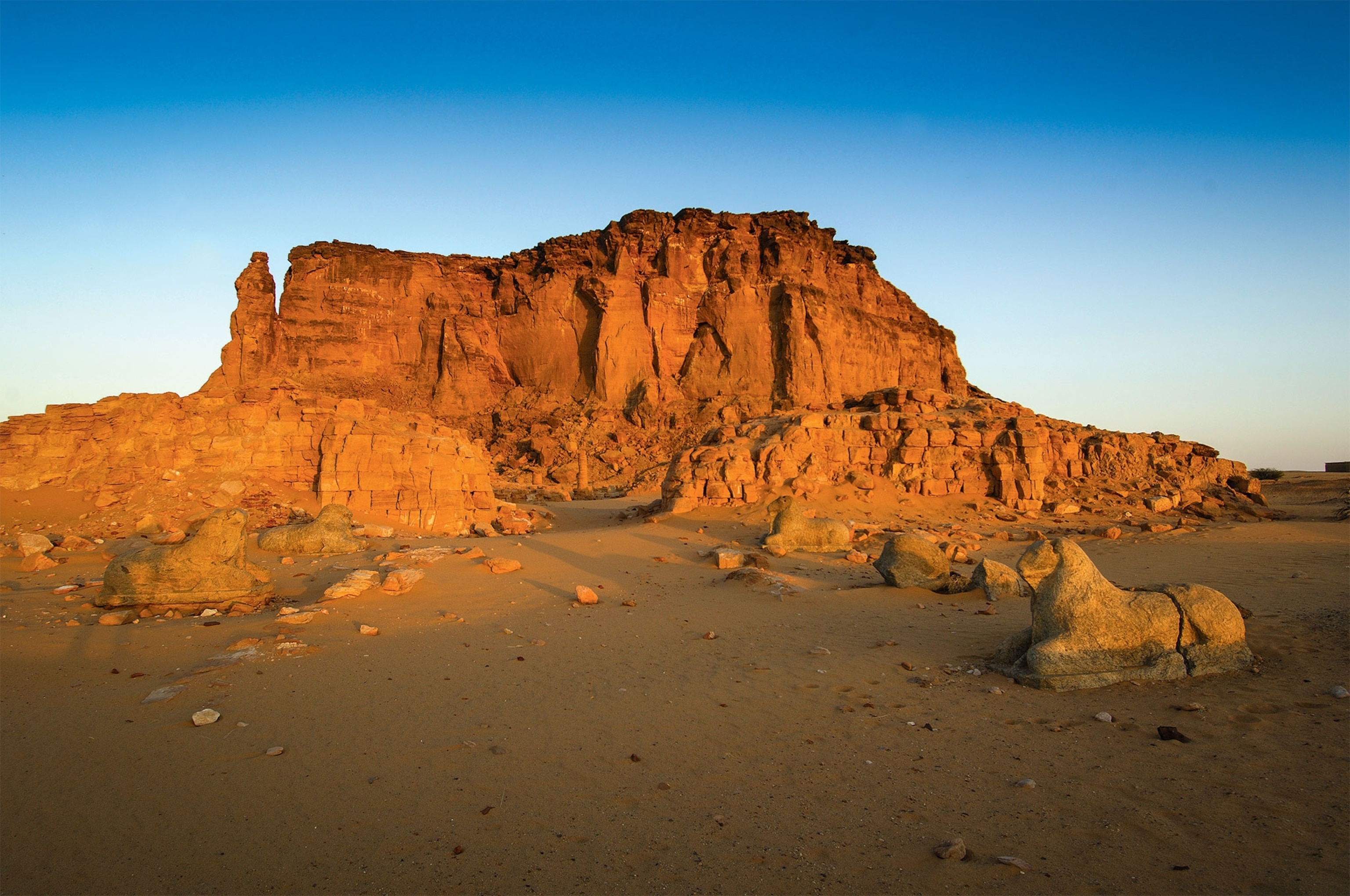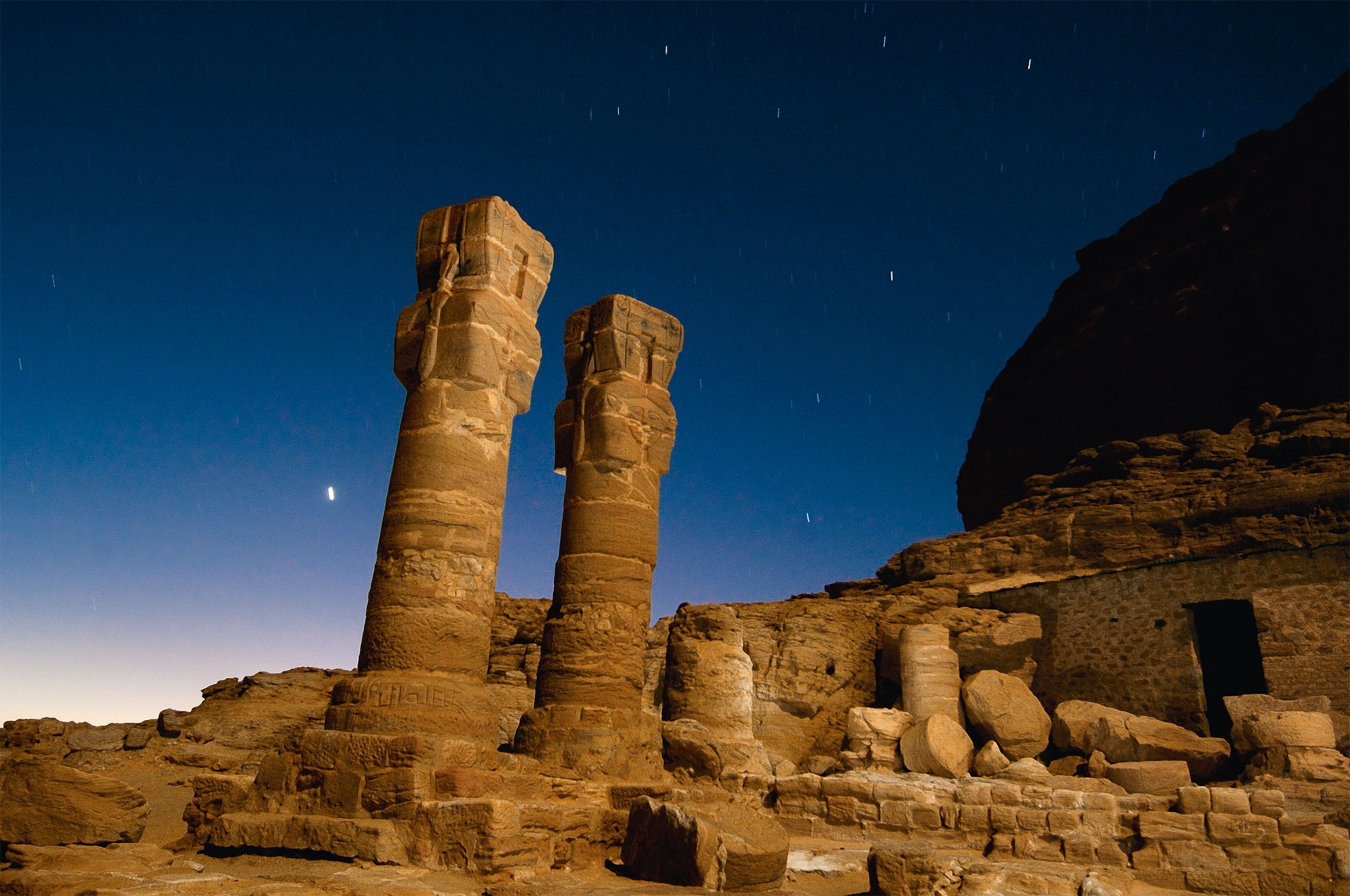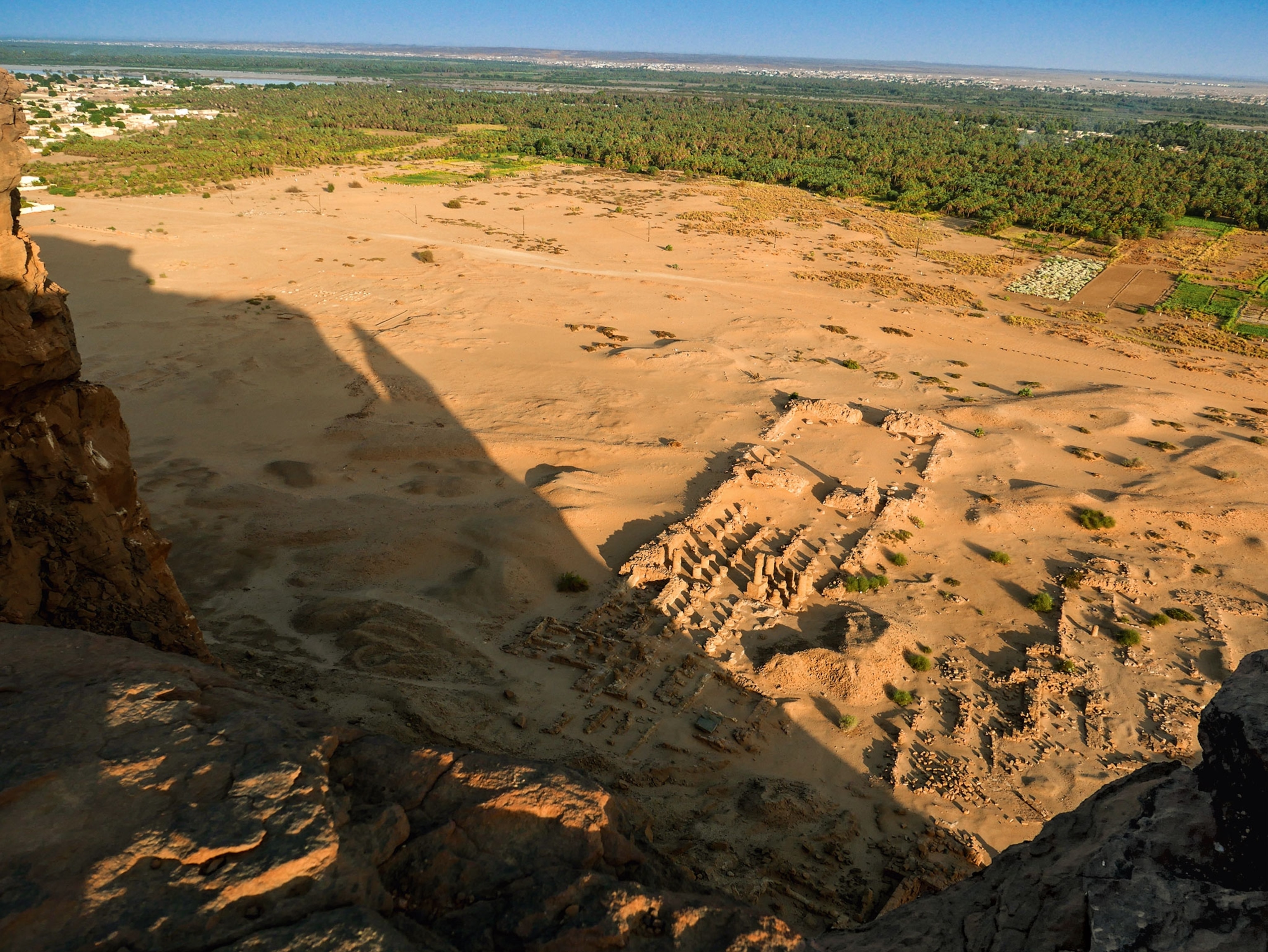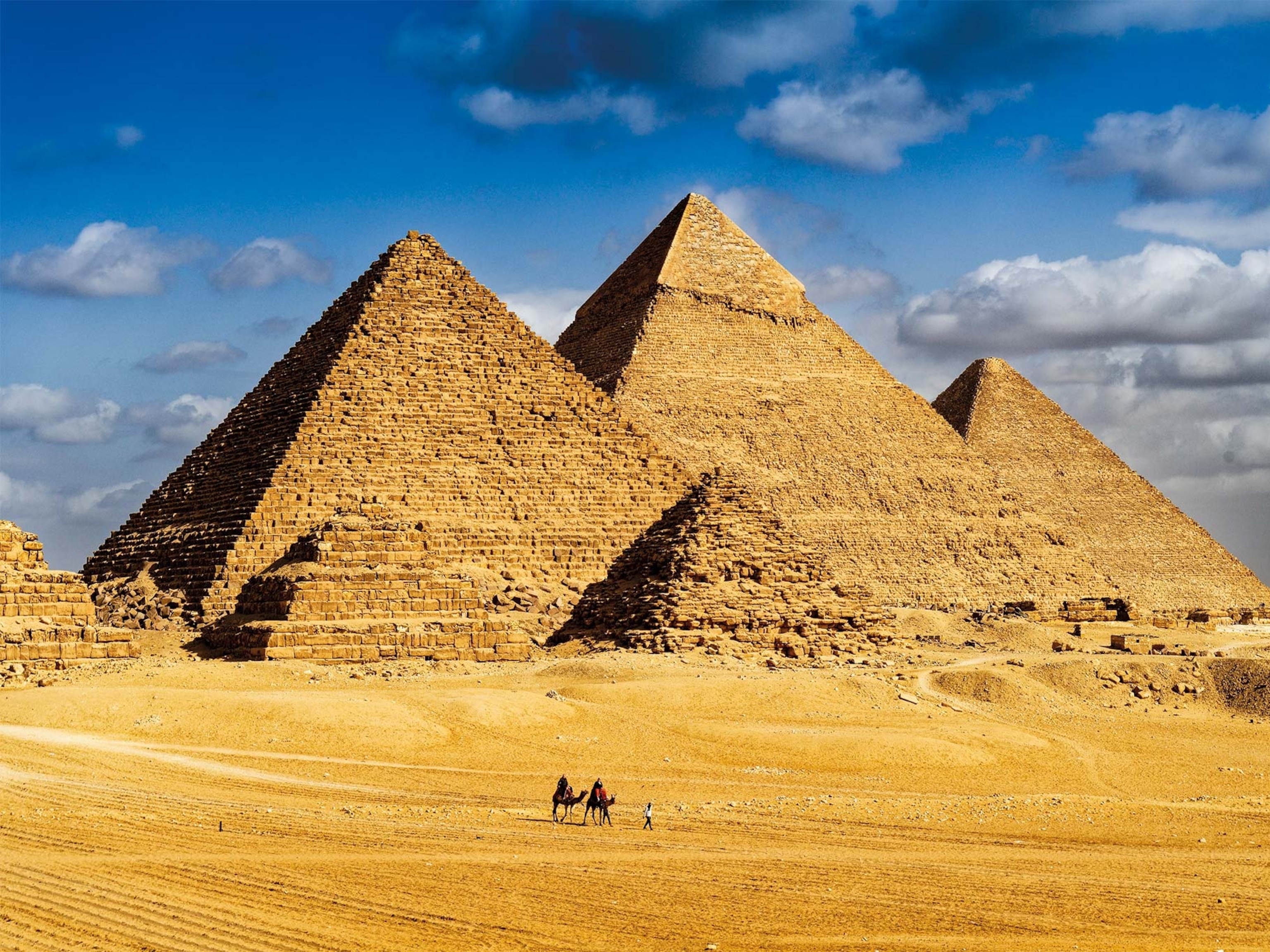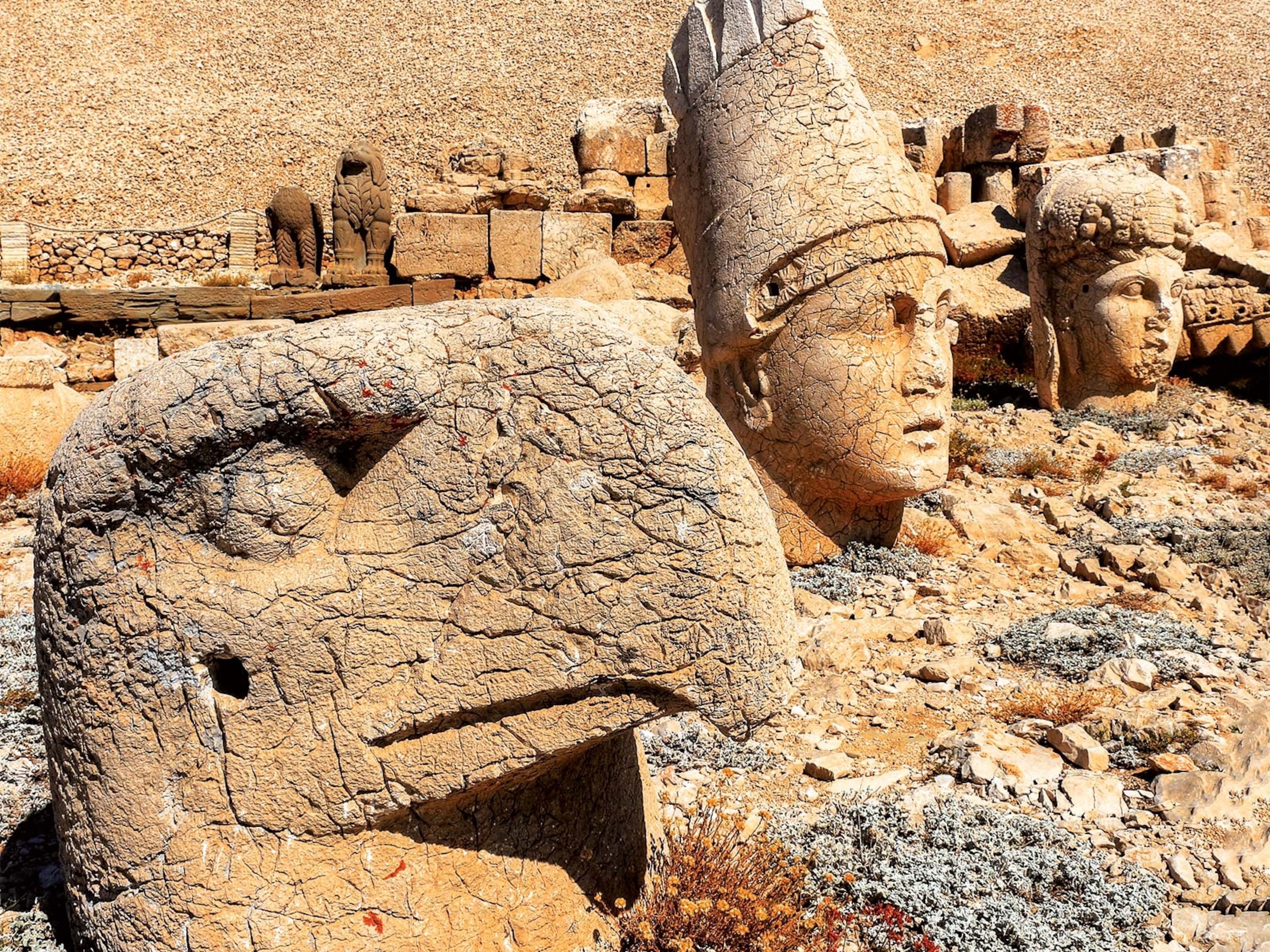
Nubian kings ruled Egypt for less than 100 years. Their influence lasted centuries.
Once vassals to pharaohs, the Kushite kings of Nubia took control of Egypt for almost a century. Embracing Egyptian rituals, they created a culture that influenced both civilizations.
South of Egypt, the Nile meanders through a vast desert landscape: the ancient region of Nubia, which now belongs to Sudan. Since antiquity, Nubia’s fortunes have been marked by the presence of six cataracts along the Nile. At these points, the rocky riverbed forces the Nile waters to swirl into mighty rapids, making uninterrupted navigation impossible. This is why for long periods throughout history, Nubia remained isolated from its powerful northern neighbor, Egypt. But starting in the eighth century B.C., Nubian pharaohs from a Kushite kingdom, now in northern Sudan, ruled Egypt. For more than a hundred years, they revived and adapted ancient Egyptian customs, influencing the development of Egypt for centuries to come.
The first Indigenous monarchy documented in Nubia was the independent monarchy of Kerma, also called Kush, in Upper Nubia. It flourished during the second millennium B.C., with Kushite monarchs practicing religious rites in mud-brick buildings such as the colossal deffufa presiding over the city of Kerma.
Because of the difficulties accessing Nubia by river, economic, cultural, and even military interactions with neighboring Egypt took place via routes through the desert. During the Old Kingdom, Egyptian traders had been traveling to Nubia to sell their wares and acquire gold, ivory, incense, and enslaved people. In a letter written around 2200 B.C., Pharaoh Pepi II tells Harkhuf, a governor of Upper Egypt who traveled through Nubia: “Come north to the residence at once! Hurry and bring with you this pygmy slave whom you brought from the Land of the Horizon-Dwellers live, hale, and healthy for the dances of the god, to gladden the heart, to delight the heart of King Neferkare who lives forever!”
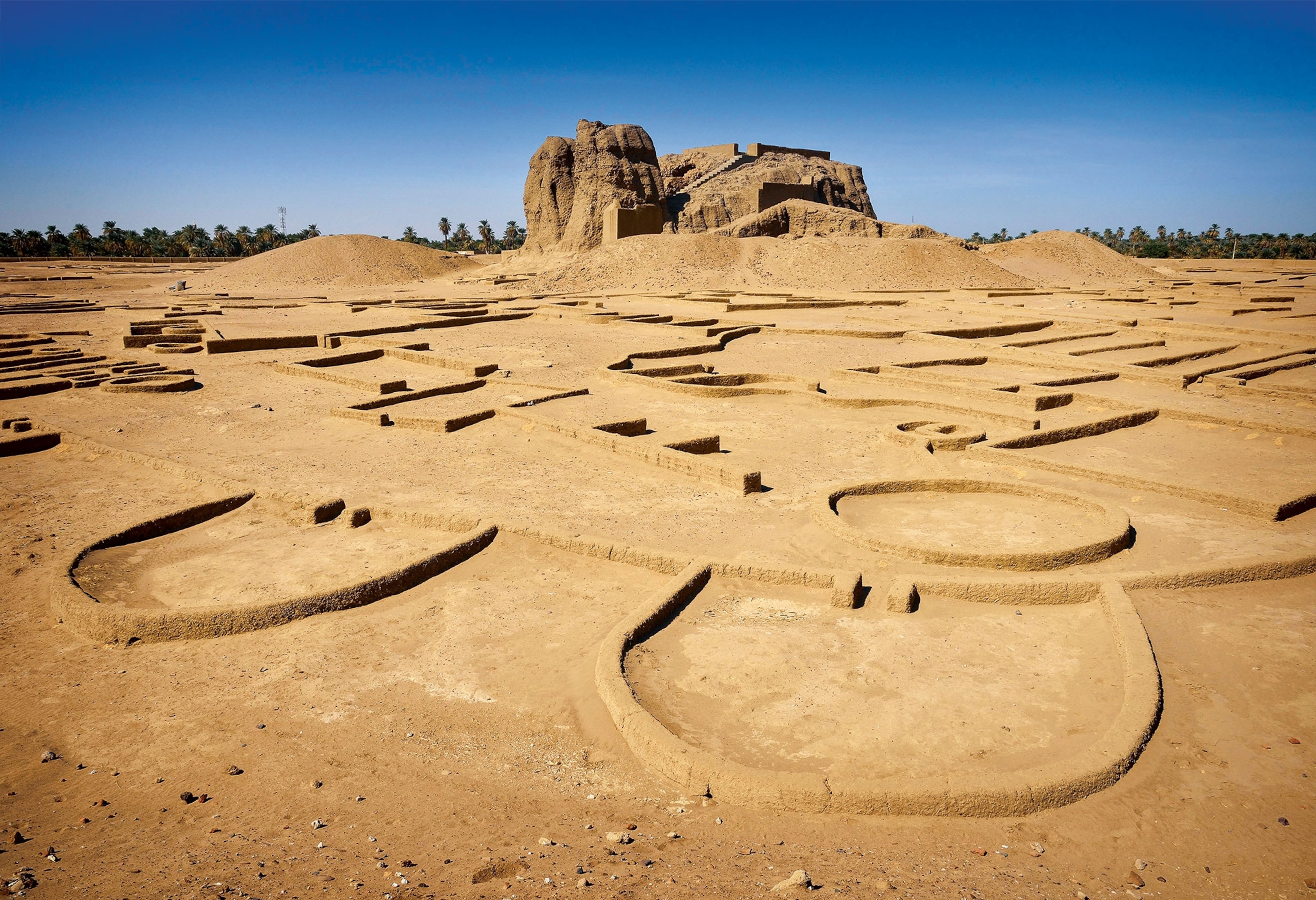
Later, during the Middle Kingdom (ca 1975–1640 B.C.), the Egyptians established fortifications in Lower Nubia, bringing the Kushite territory between the First and Second Cataracts (from Aswan to beyond Abu Simbel) under the control of the Egyptian pharaohs. Their purpose was to control trade in the region and secure Egypt’s southern border.
During the New Kingdom (ca 1539–1075 B.C.), the first pharaohs of the 18th dynasty annexed Nubian territory all the way to the Fourth Cataract. The pharaohs appointed viceroys who ruled over Nubian lands—which they called Kush—from about 1550 to 1069 B.C. These viceroys commissioned the construction of imposing fortresses and splendid temples, such as those at Abu Simbel and Soleb.
(Epic engineering rescued colossal ancient Egyptian temples from floodwaters.)

During the era known as the Third Intermediate Period (ca 1075–715 B.C.), Egypt’s government was in the throes of political chaos and decline. Nubia was left fairly free of pharaonic intervention, and several new, independent Kushite kingdoms flourished. In one of these, near the Fourth Cataract, a dynasty of rulers emerged in the mid-eighth century B.C., this time establishing the kingdom’s capital at Napata and a necropolis at nearby El Kurru. The rulers of this Kushite kingdom would eventually govern those who had once controlled them, even becoming pharaohs of Egypt themselves.
The Shabaka Stone

Taharqa, the conqueror
This new Kushite kingdom was founded by two kings, Alara and Kashta. Kashta’s son Piye later pushed the empire’s boundaries as far as Elephantine, or present-day Aswan, thereby bringing Lower Egypt under Kushite control. Piye also set his sights on Upper Egypt and, around 727 B.C., launched a military expedition in which he took Hermopolis and sacked Memphis. But Piye returned to Napata without consolidating Kushite dominion over Egypt. That mission would be accomplished by his successors Shabaka (aka Shabaqo) and Shebitku (aka Shabataka). As representatives of a new Egyptian dynasty, the 25th, these Nubian kings moved their capital to Thebes and secured control of the country as far north as the Nile Delta.
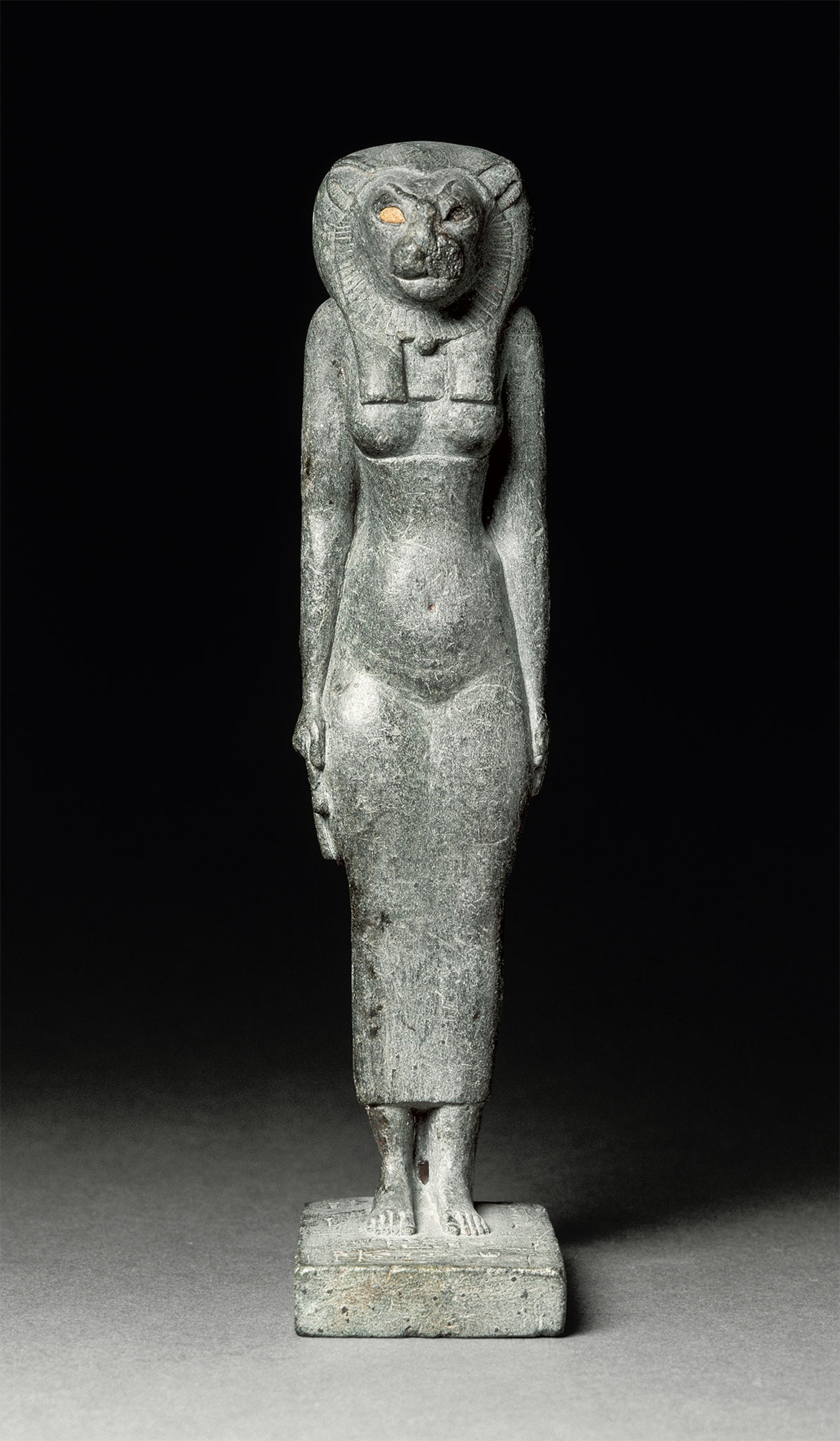
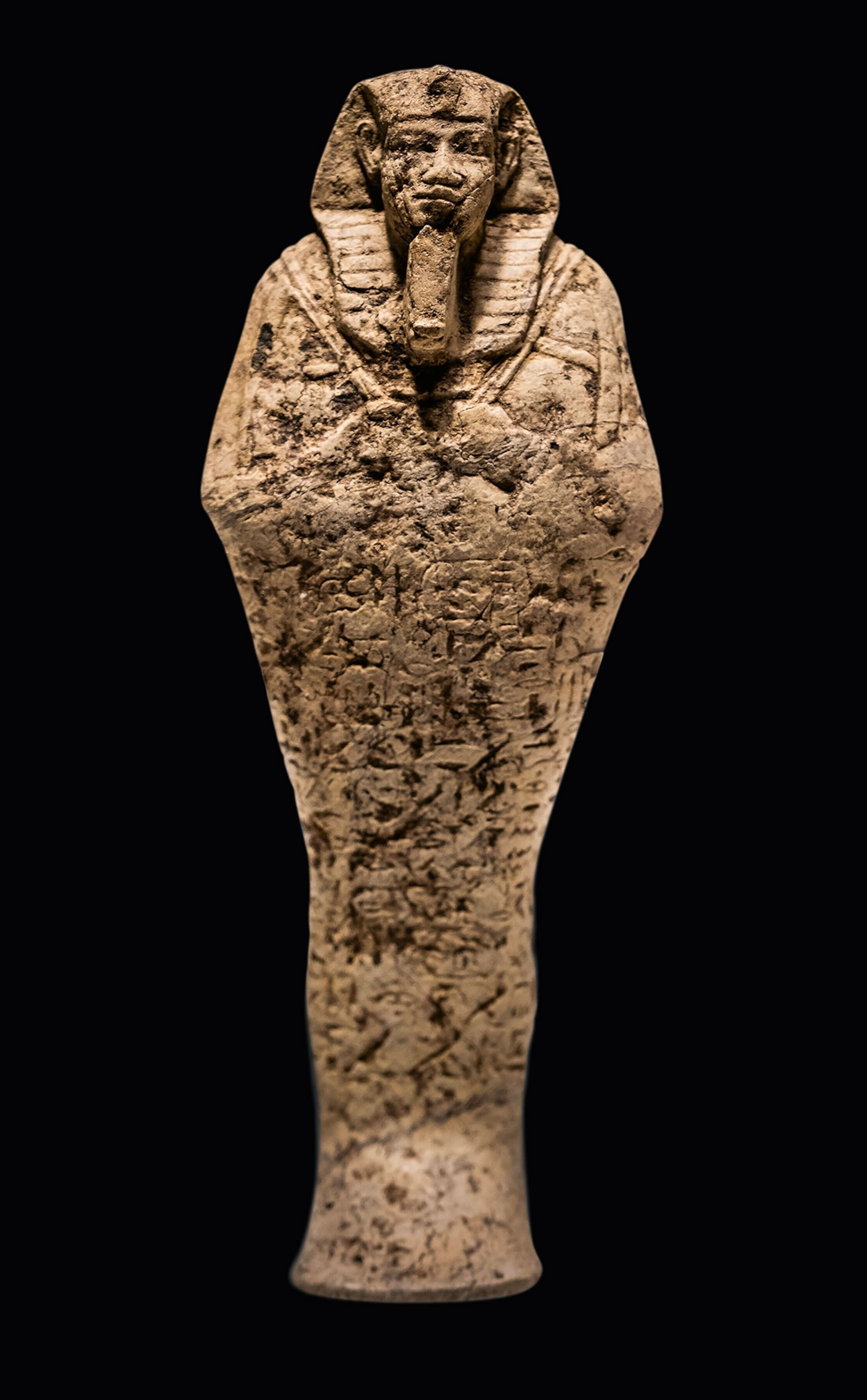
The most renowned pharaoh of the 25th dynasty was undoubtedly Taharqa, brother of Shebitku. Many scholars believe Taharqa is the Kushite king Tirhakah, mentioned in the Bible’s Book of Isaiah regarding the invasion that Assyrian king Sennacherib launched against Judah: “Now Sennacherib received a report that Tirhakah, the king of Cush, was marching out to fight against him” (2 Kings 19:9).
(Rival to Egypt, the Nubian kingdom of Kush exuded power and gold.)

From Egyptian sources, it appears that under the reign of Shebitku, Taharqa had been charged with supporting the kingdom of Judah against the Assyrians. In the end, Jerusalem did not fall into Assyrian hands, a fact the Bible attributes to the Lord answering Hezekiah’s prayers: “The angel of the Lord went out and put to death a hundred and eighty-five thousand in the Assyrian camp . . . So Sennacherib, king of Assyria, broke camp and withdrew” (2 Kings 19:35-36).
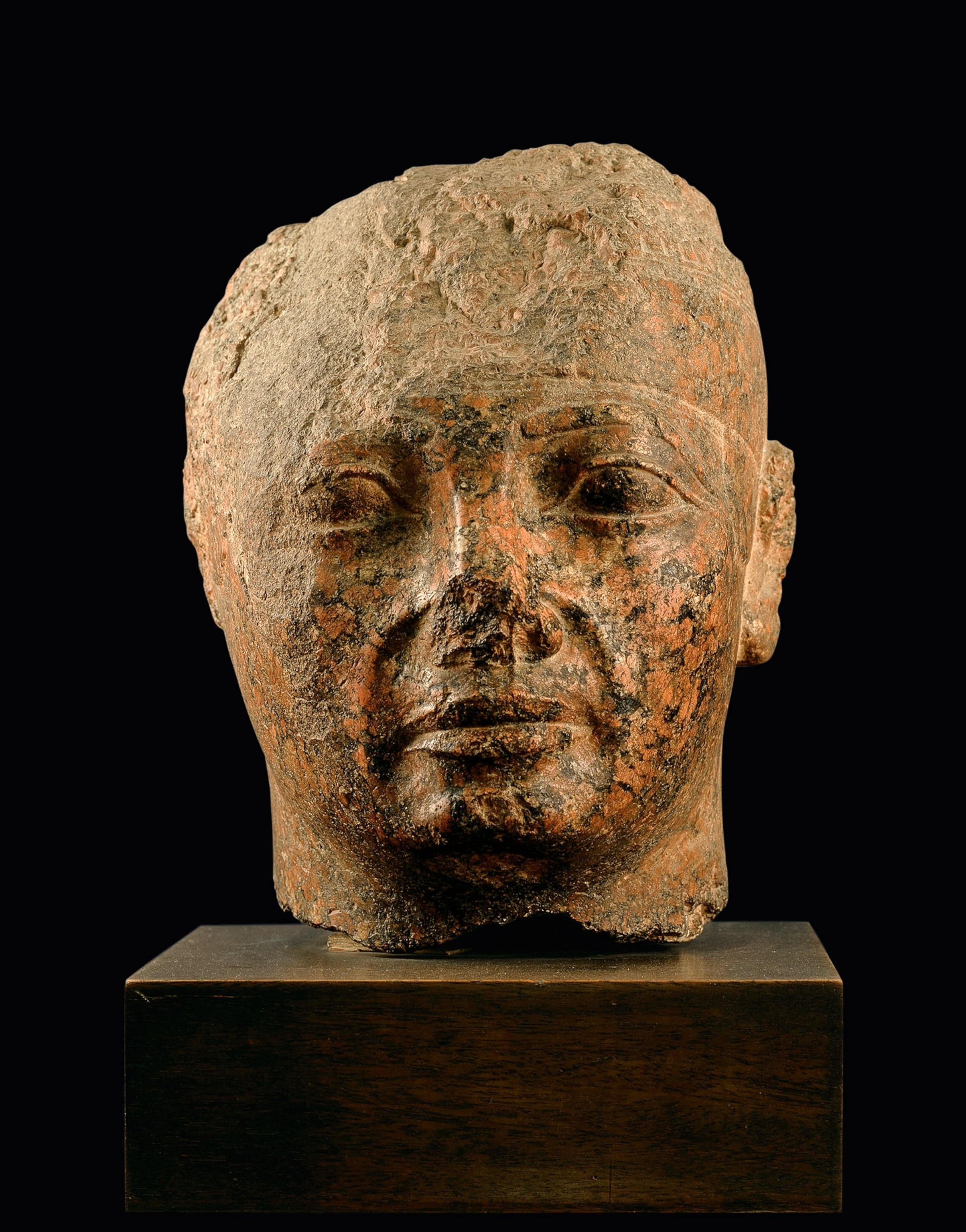
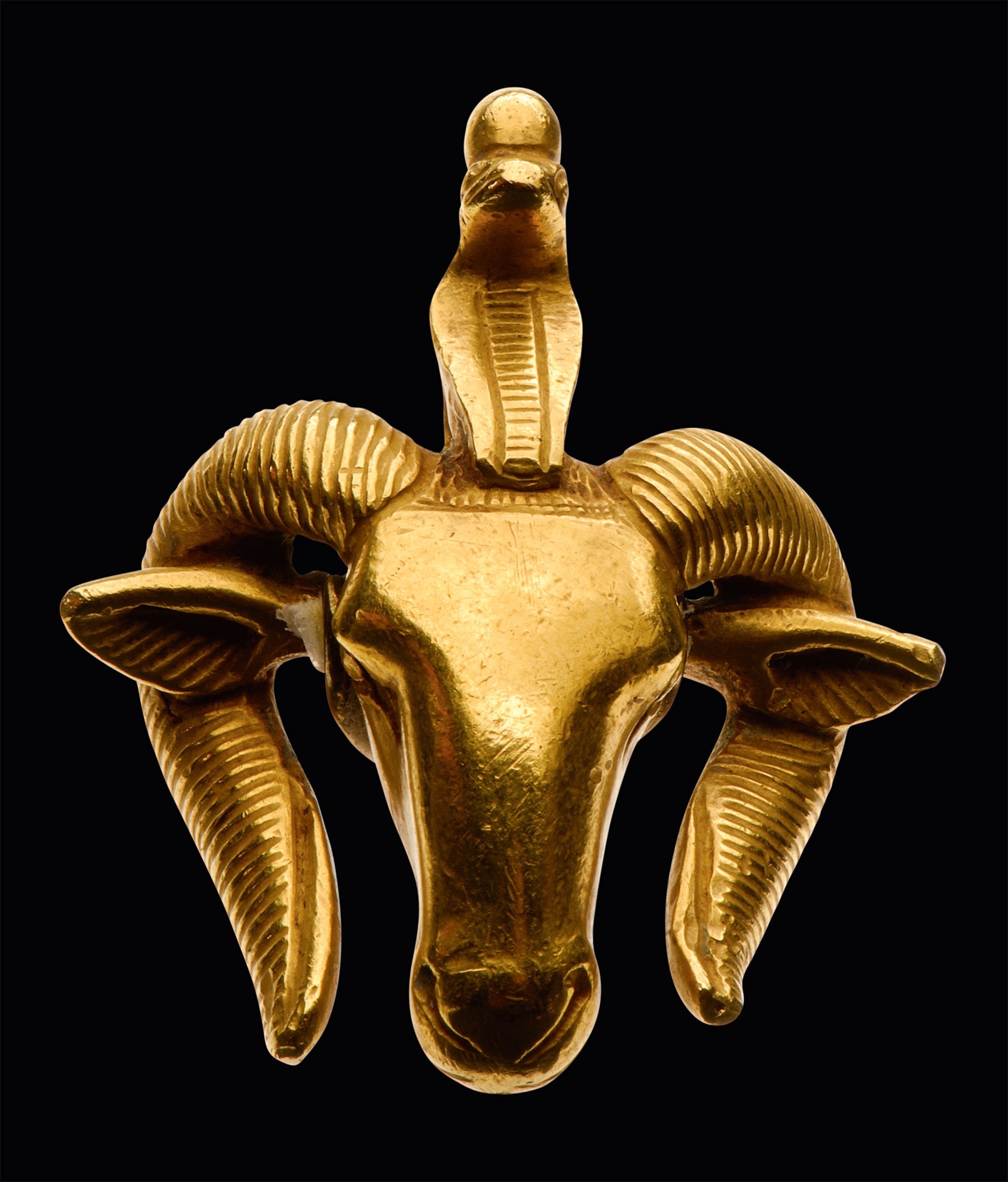
Taharqa, the builder
Taharqa insisted his claim to power was not only hereditary but also divine. On a stela from the temple of Amun at Kawa, he declares: “I received the diadem in Memphis after the falcon went up to heaven and my father Amun had ordered for me that every land . . . be placed under my feet.” This alludes to the fact that the pharaoh had succeeded his predecessor after his death. The identity of the king associated with a falcon—in other words, with the god Horus (who is often linked with another falcon-god, Hemen)—isn’t specified, but the phrase likely refers to Shebitku, who, according to the same stela, “loved him [Taharqa] more than all his [other] brothers.”
In honor of Amun
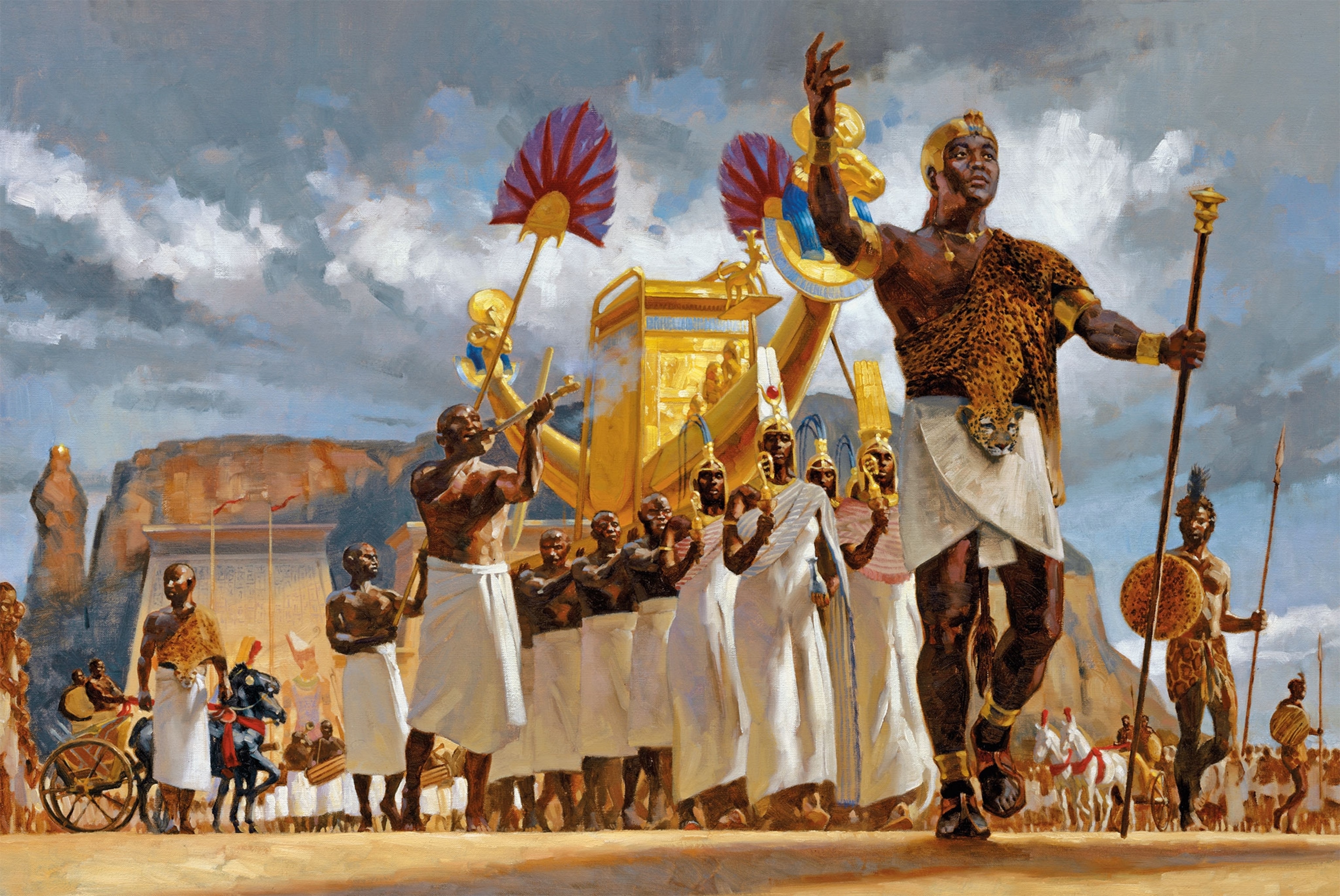
During Taharqa’s reign, which lasted almost 26 years, the pharaoh commissioned numerous monuments and religious buildings. In Thebes he added new spaces to the Great Temple of Amun at Karnak, notably a structure called the kiosk of Taharqa in the first courtyard. He had the sanctuary of Amun at Napata rebuilt and constructed a temple to Amun at Kawa in about 680 B.C. In the Kawa sanctuary, a commemorative inscription reads: “Mark you, my mind is [set] on [re] building the temple-compound of my father, Amun-Re of Kawa, because it is built of brick [only] and covered with earth.”
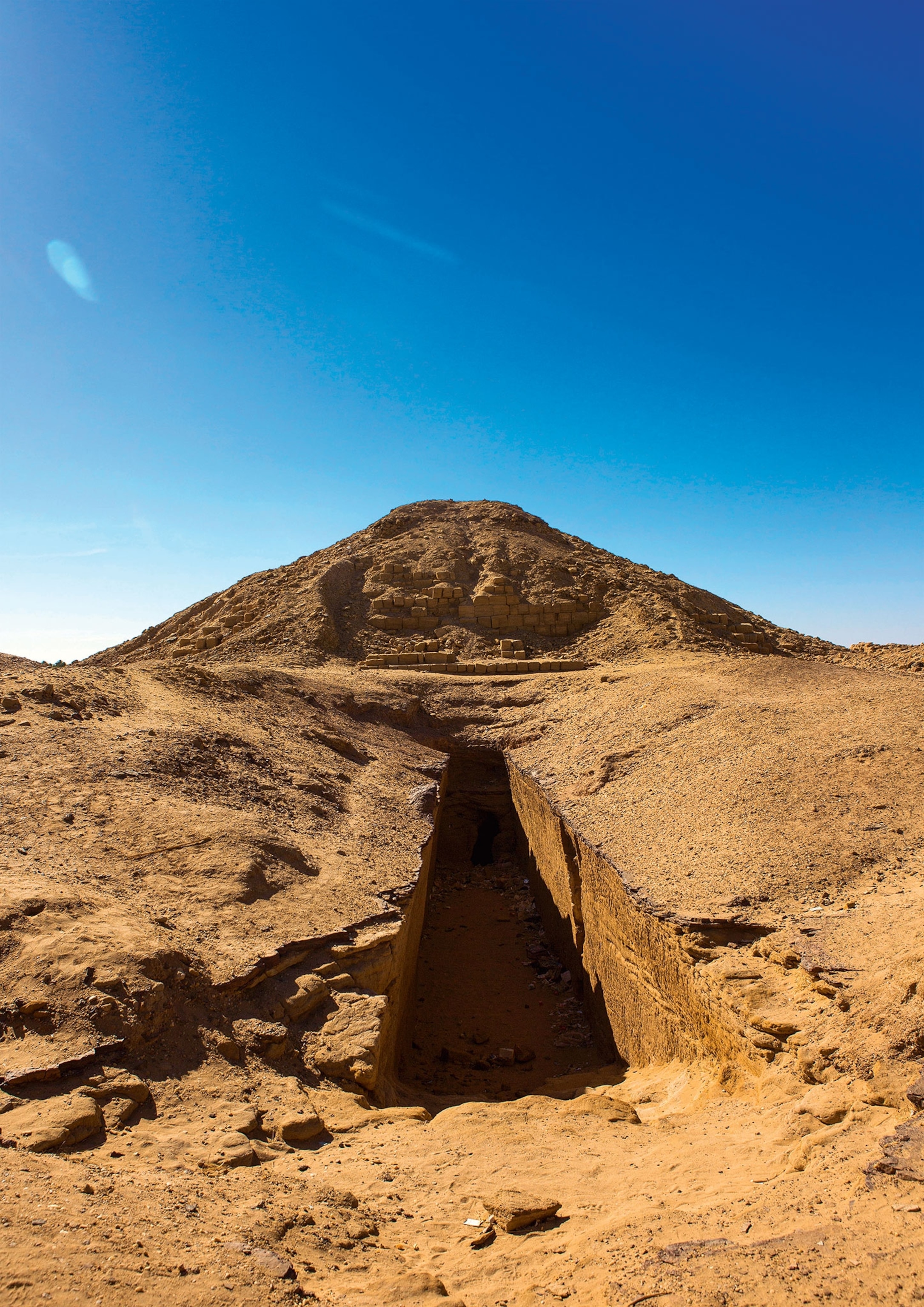
Taharqa had his burial pyramid built in Nuri, on the opposite bank from the necropolis at El Kurru, where his ancestors lay. What prompted the location change is unclear, but it’s likely that the site of the necropolis was linked to Jabal Barkal, the “Pure Mountain” of Napata, a natural sandstone butte that dominated the Nubian capital. The pinnacle of this mound, reaching a height of almost 250 feet, was said to resemble a rearing cobra, or uraeus, a symbol of royalty. When seen from Jabal Barkal on Egyptian New Year’s Day, the sun seemed to rise directly over the pinnacle of the pyramid of Taharqa. Since the holiday coincided with the annual regenerative flooding of the Nile, this linked Taharqa with not only the sun god Re but also Osiris, the god of the afterlife and fertility.
(These mighty pyramids were built by one of Africa’s earliest civilizations.)
Miraculous deeds
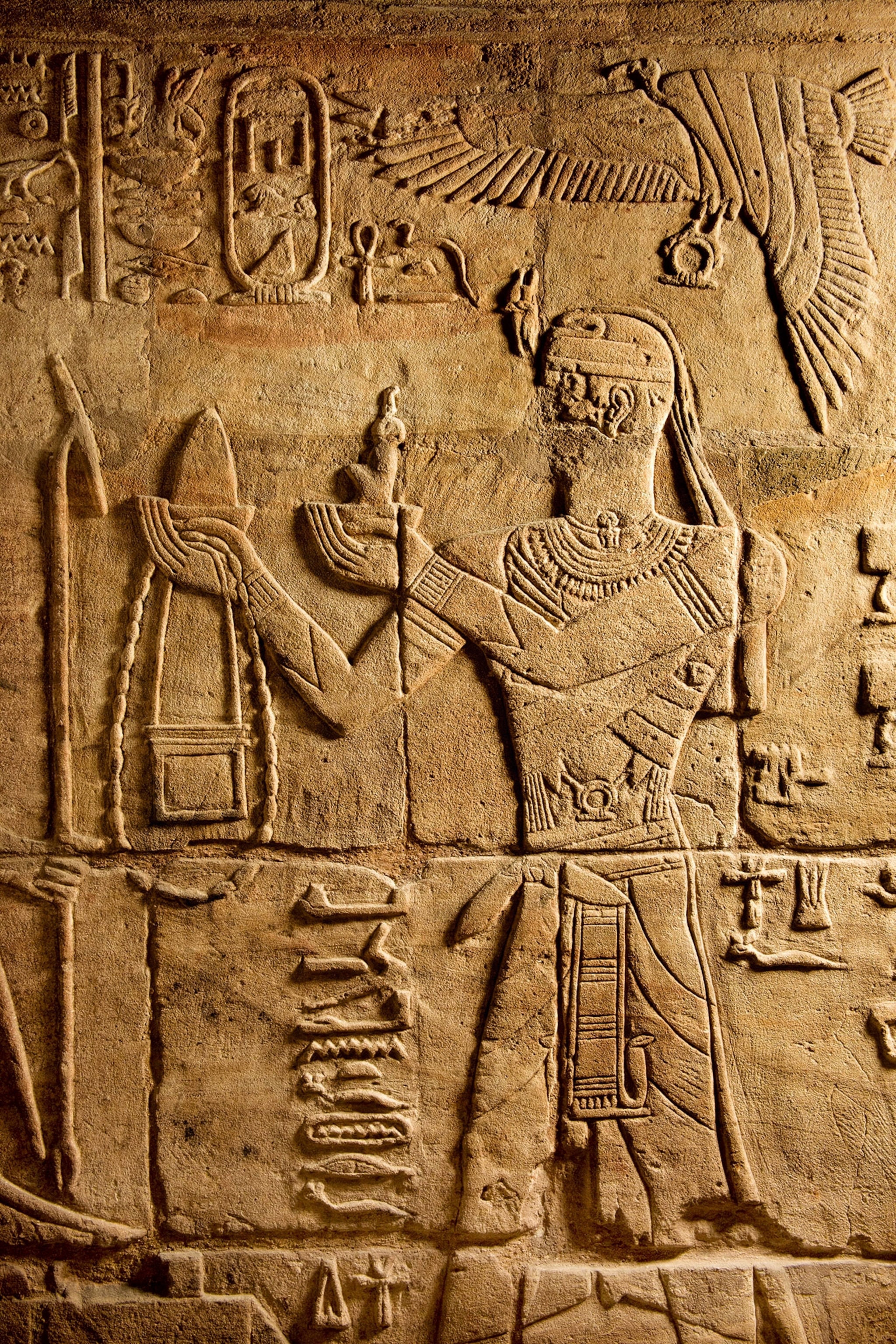
Legacy of Taharqa
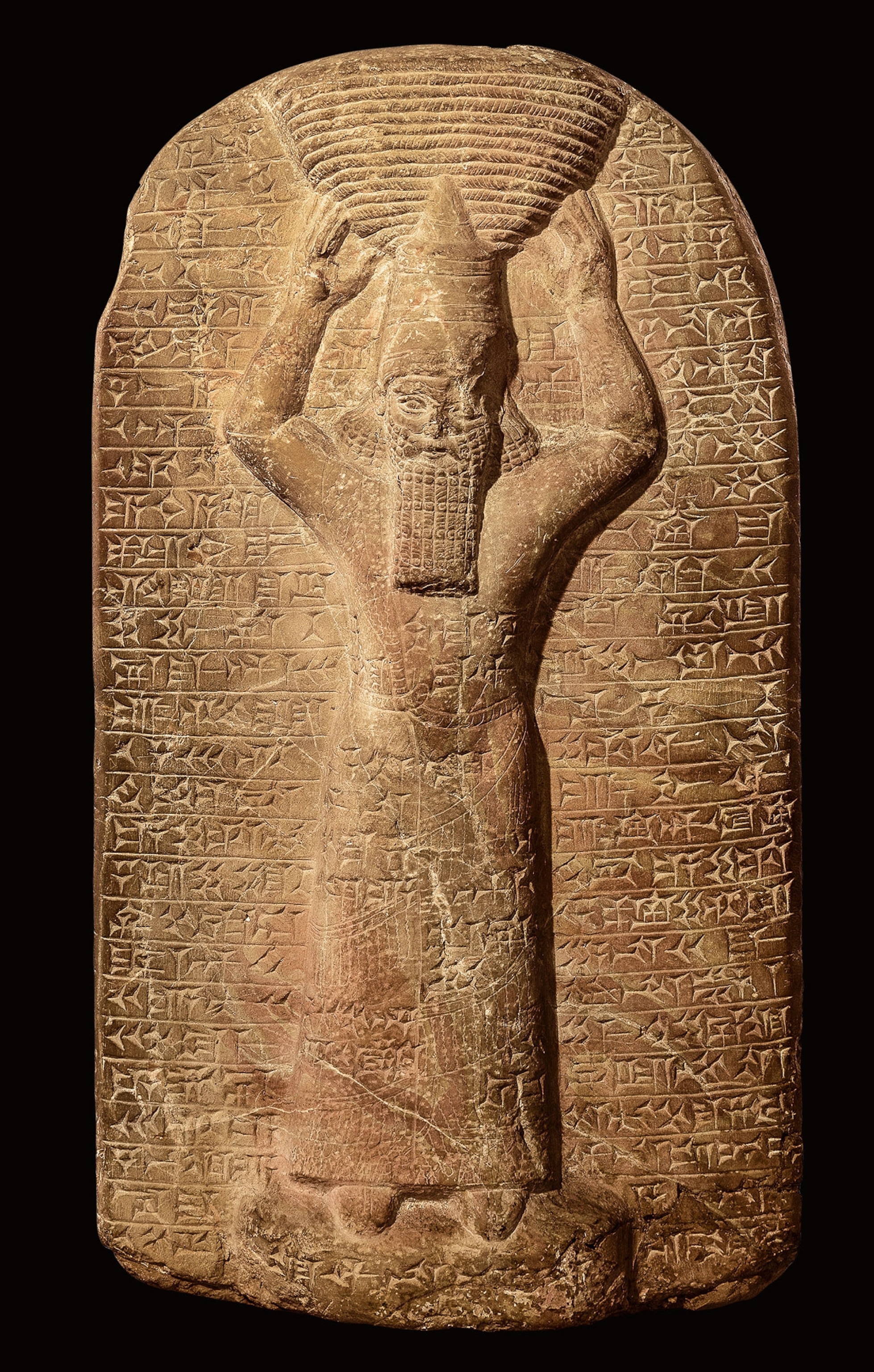
The death of Taharqa, in 664 B.C., marked the decline of Nubian rule over Egypt. Taharqa had already lost control of Lower Egypt to Ashurbanipal in 667 B.C. Taharqa’s successor, his nephew Tanutamani, briefly regained control of Upper Egypt before being defeated once again in 663 B.C. by Ashurbanipal. Tanutamani was forced to return to Nubia, where he remained until his death.
After the fall of the 25th dynasty, the new kingdom of Meroë was established in Nubia, tending the flame of Egyptian culture until the fourth century A.D. There, the temple of Naga, where Nubian divinities such as the lion-god Apedemak are represented alongside the Egyptian god Horus, exemplifies the syncretic culture the Kushites fostered and the ways in which Nubia and Egypt are forever linked.





